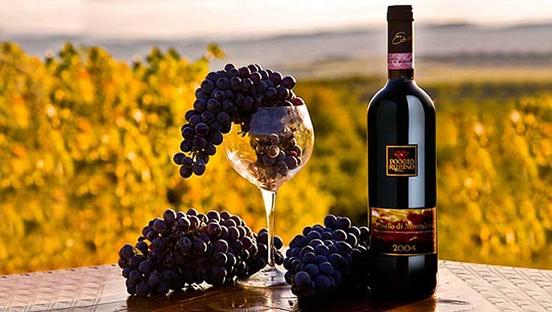 Wine, just like all Italian cuisine, suffered from stereotypical images of him, iambrusco ranks second on the list of the best wines in the UK, and cheap Soaves and Chianti are the most popular wines in Europe. High harvest, low prices, export at all costs and poor jakość.to methods.which until recently were used in the Italian wine industry.
Wine, just like all Italian cuisine, suffered from stereotypical images of him, iambrusco ranks second on the list of the best wines in the UK, and cheap Soaves and Chianti are the most popular wines in Europe. High harvest, low prices, export at all costs and poor jakość.to methods.which until recently were used in the Italian wine industry.
A pleasant surprise for travelers in Italy is this. that the best wines are preserved for the domestic market. Thanks to the DOC system (See. below) the quality of wine in recent years has been gradually increasing. Many producers have switched to producing higher quality wines, and beyond the refinement of known wine types. such as Barolo and Orneto, new experimental species are introduced everywhere. Besides, winemakers in the south no longer stop at selling almost all of their production in the north for the production of mixed table wines., and French Chardonnay wines, Sauvignon and Pinot in Tuscany. Trentino-Alto Adige and Frulia have become as popular as traditional Italian wines.
Italians are not guided in the choice of wine by snobbery. Wines 'noble” they do not enjoy the same respect here as in France or England. Light red wines eg. those made from dolcetto grapes in the heat are served straight from the refrigerator, and some strong white wines are drunk at close to room temperature. Wine is always drunk with a meal. They are all still very cheap and therefore it is worth avoiding the cheapest, the flimsiest wines. Probably, that you want to get drunk cheaply. In restaurants, red wine is always served (rosso) or white (Bianco), and only rarely pink (Rose). Being undecided about the species, who wants to order, there is no reason to avoid the locals, poured straight from the barrel of wines. which are often not only very good, but also cheap (2000-3000 L per litre). Bottled wine is just as good, but a bit more expensive: in the restaurant a bottle costs 8000 L, in a store or department store, more than half as much. An interesting fact is. that in bars wine is usually not served by the glass. Where it is practiced, a glass costs ok. 1000 L.
System Denominazione d Origine
This system is the key to understanding the diversity of Italian wine, but it should not be treated as a guarantee of quality. This category is a confirmation of the origin.but not the quality of the brand. The DOC symbol can denote, that the wine is suitable for consumption, but limited only to such wines. you can lose a lot of interesting taste sensations.
DOC zones were designated by the government's decision. They determine the extent of production of particular types of wines. grape types, to be used, maximum grape yield per hectare and period of compulsory storage of wine before being put up for sale. Vino da tavola labels these wines. that do not meet DOC standards, which does not mean . that it is safer to pour them out than to drink them. Denominazione d'Origine Controllata (DOC) is only a guarantee of the place of origin of the wine and the conformity of its method of production with the standards laid down for the area concerned. Only the symbol Denominazione d'Origine Controllata e Garantita IDOCG] is now of practical importance to the buyer. Wine sold with such a symbol must not only comply with DOC regulations. but it is also tested by government inspectors. However, there are only a few such wines.
Despite. that it is undoubtedly true, that the introduction of the DOC system has contributed to improving the quality of Italian wine, these standards are criticised, by both growers and specialists, for excessive rigidity, restrictions and numerous anomalies. Example. Chianti is an excellent dinner wine, with a respectable tradition, but his vintage 1984, even though it belongs to the DOC, may not be drinkable. Some say, that doCG is also losing its credibility, m.in. this is why, that the standard for the storage time of known red wines, for example. Barolo. can destroy their characteristic taste of fresh fruit, and on the other hand,, DOCG status is granted to such ordinary white wines as Albana di Roma gna. Experimental producers are increasingly disregarding regulations and making new wines.. which are often expensive and belong to the best Italian wines, even though officially they are still da (Avola (however, a new class of super mi da tavola appeared). Sicilian white and red Corn wine is the best example of wine without DOCG approval, and yet modern and the price almost doubles the usual table wine. Similarly, Tuscany produces wonderful 'un-classified'” table wines.